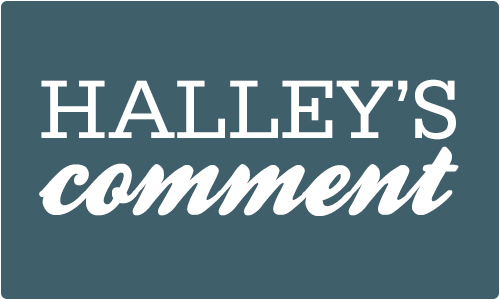Susan Scott's Blog, page 81
August 27, 2014
How to Avoid an Email #FAIL
Fierce CEO, Halley Bock, is currently writing a column for Business 2 Community. We wanted to share with you her most recent article, published Wednesday, August 20th.
We’ve all done it, or had it done to us: An email used as an inconspicuous nuclear bomb meant to annihilate in the most “charming” and brief way possible. Or the dreaded “cc” ploy designed to ensure public humiliation. Or the over-enthusiastic, reply-all that creates another 100 emails on reply-all policy and email etiquette. The list could go on.
We have unwittingly uncovered many ways to abuse email – some more obvious than others, some more harmful, some more intentional. Too often, abusers are substituting cold, hard, unemotional keystrokes for real, productive relationships with coworkers. Connection, trust and relationships just can’t be established electronically.
When email is the optimal communication option, make sure you aren’t stepping into a digital minefield. Here are 4 tips to avoid an email #FAIL at your workplace.
1. Emoticons can’t save you.
The most dangerous aspect of email is that the recipient can’t see your face, hear your voice, or read your body language to understand intent. And in the void of any signals, we assume the worst. An email that simply states, “I understand.” can be interpreted a multitude of ways. I’ve even had it come back as angry, terse, or clearly put out. When, really, all I was saying was I understood. Isn’t that a good thing?
Rather than get into the psychology of humans and why we tend towards “worst case scenario,” the invention of emoticons is clear. We put a smiley face at the end of statements to let our audience know that we are happy. Everything is good! In this case, I recommend you use them.
However, if you find yourself needing to sprinkle your email with smiley faces every other sentence or paragraph, you either need to pick up the phone and have a conversation, as the topic is too sensitive for email, or you have an Emoji addiction. In either case, don’t leave it to the recipient to deal with the emoticon-loaded message.
2. Keep it short.
Unlike this article, emails should be short. There are few things more depressing than opening an email only to find an electronic tome in which every bullet point requires an answer.
If you have a lot of information to share, consider downloading it into a shared or local document for easier reference down the road. If it is simply an “FYI” recapping the outcome of a meeting AND your team has agreed that receiving notes in the body of an email is in good form, then by all means go for it.
And, finally, if your recipient list is more than 5 with more than 5 critical items for feedback, consider pulling the team together for a quick meeting. Chances are you’ll avoid a lot of confusion and make much more efficient use of everyone’s time by coming together in person or on a call.
3. Lower the flag.
How many of you know someone whose emails are ALWAYS IMPORTANT!! Forever URGENT, as if the world may stop spinning should their emails go unattended to for 24 hours. Where every message line includes “IMMEDIATE RESPONSE REQUIRED,” as if the double red flag wasn’t enough of a cue.
Look, I like immediate gratification as much as the next person. And, sure, I like to feel important every once in a while. But let me assure you: your emails are not that important all the time. It may feel really important to you, as it should! You’re doing what you’re passionate about. But please recognize that the rest of us have our own important things as well.
4. When in doubt, don’t.
Finally, words passed on by my grandmother come to mind, “When in doubt, don’t.” If you’re concerned that someone will misinterpret your intent or tone, they will. If you think the matter or issue would best be discussed in person, it would. If you suspect the information is too complex to communicate in email, it is. If you know deep down that you are taking pot shots behind the safe veil of an email, they know too.
Email is a wonderful tool afforded to us. While it is extremely powerful in communicating information, it severely lacks in the area of creating and maintaining strong personal relationships. Be careful not to coast on email by replacing conversations with electronic memos, where we rely on binary code to do the work of emotional connection.
While we can technically “connect” online, we can only forge true, meaningful, long-term relationships face-to-face or in the presence of one another’s voice. So stand up, walk out, and deliver that message in person whenever you can.
August 25, 2014
Fierce Tip of the Week: Decide What’s Important
Arianna Huffington’s new book, Thrive: The Third Metric to Redefining Success and Creating a Life of Well-Being, Wisdom, and Wonder, makes a compelling case to redefine what success means in today’s world. The book gave me some tips and tricks to personally redefine success for myself.
Success means different things for different people. And at the end of the day, we only have so many hours to focus on what we think is important.
One of my favorite quotes that Huffington included in Thrive is:
“And every day, the world will drag you by the hand, yelling, ‘This is important! And this is important! And this is important! You need to worry about this! And this! And this!’
“And each day, it’s up to you to yank your hand back, put it on your heart and say, “No. This is what’s important.’”
- Iain Thomas
So I ask you: What is important to you? Where do you want to put your energy?
This week’s tip is to look at areas where you want to focus more. What does the balance of inside and outside of the office optimally look like for you?
How are you going to focus on your success?
August 22, 2014
Fierce Resources: The Value of Conversations with Employees
This week’s Fierce Resource comes from the Gallup Business Journal and was written by Jessica Tyler.
The Value of Conversations with Employees outlines key elements that support engagement and healthy relationships in the workplace. Recently I heard from a colleague that she met a woman who said, I don’t care about the relationships I have at work, I care about winning.
What happens when you work with someone who doesn’t care about the relationships they form at work? What are the results?
“Caring is one element of engagement, and there are 11 more. Gallup assesses the engagement level of a workforce by measuring the extent to which 12 key conditions exist in the workplace. Employees indicate the areas in which engagement is strong or lacking, and the results provide a guide for teams to improve engagement.”
To read the full article, click here.
August 20, 2014
3 Tips to Create an Intentional Workplace
Intention is defined as a determination to act in a certain way. Intention in the workplace is centered around creating change and building a framework for how people show up every day.
Many times organizations reference their values or more abstract concepts for how people should act. The problem is people often have different interpretations.
Take “respect” as a value example. To one person, respect can mean telling someone the absolute hard facts that come to mind for a particular strategy. AKA tell them how it is – be a straight shooter – it is to their benefit. On the other hand, to another person, respect means allowing someone the space and ability to figure it out for themselves. AKA don’t be overbearing – be a supporter – it is to their benefit.
Both perspectives are “right”. So what behaviors do you want to see?
It is critical for organizations to tie behaviors and structures to their values, so that people have a common framework and clarity around expectations.
Below are three tips to create a more intentional workplace.
1. Meetings Matter. Create meetings with purpose and goals that align with your values as opposed to only holding meetings for needs and projects. For example, a Fierce value is to innovate often. In order to create time and space to make this happen, the Fierce marketing team has a two hour innovation meeting each month that allows for individuals to slot any innovative topic to discuss with the entire team. Structure meetings that allow time for conversations that align with your values.
2. Build Feedback. Give and receive feedback on a regular basis at all levels. Feedback is a practice that generates clarity in the workplace. In Fierce feedback, we define feedback as the opportunity to see what you may not see. Understanding people’s perspective and what they see is critical for making sure the goals of the organization are being achieved. Give your team the skills to have feedback conversations.
3. Recognize Behaviors. Share appreciation when people are upholding behaviors that are valued in your organization. Whether it is how people use devices in meetings or how a project is ran, the everyday activities in your workplace ultimately determine the kind of relationships, and hence the culture, that exists. Find time to show gratitude for people who are truly making a difference with how they show up.
How do you help create intention and aim with your team? In your organization?
August 18, 2014
Fierce Tip of the Week: To Phone or Not to Phone
Oh how we love our phones. They are our lifelines. Many of us feel lost without our pocket-sized computers. Our phones provide connection with others and our world. From using the Google Maps app to checking our emails, our phones help us navigate through our days– literally and figuratively.
But when are our phones more harm than good? Sometimes I find myself checking it out of habit – not need. Admit it, you probably do too.
For me, I’ve had to train myself to curb my device use. Sometimes that means extremes. I physically leave my phone outside of some meetings to not be tempted to check it. I also have the expectation that others get off their devices at meetings I run, so we show respect to each other and focus on the true reason we are all together.
Do you have any challenges with this?
This week’s tip is to be intentional with how you use your phone. Ask yourself: In this given moment, is paying attention to my phone more important than the people around me?
August 15, 2014
5 Hard Truths About Leadership That You Never Stop Learning
This week’s Fierce Resource comes from TLNT.com and was written by Scott Span.
5 Hard Truths About Leadership That You Never Stop Learning identifies some of the hard truths that leaders face within businesses of any size, shape, or industry.
Steve Jobs one of the most memorable leaders of all time said, “My model for business is The Beatles. They were four guys who kept each other’s kind of negative tendencies in check. They balanced each other and the total was greater than the sum of the parts. That’s how I see business: great things in business are never done by one person, they’re done by a team of people.”
How do you keep your strengths and weaknesses in check?
“Successful leadership requires heightened self-awareness, expert communication, and accountability. These aren’t skills we all inherently have, or have a desire to learn. It doesn’t get any easier at the top – and the learning doesn’t just stop.”
To read the full article, click here.
August 13, 2014
3 Tips to Be a Leader Who Shares Success
This article was originally published on the Fierce Blog in May 2013 and was written by our Vice President of Marketing, Stacey Engle who continuously abides by her tips for developing those around her.
Think about a leader in your life who people deeply commit their time, talents, and hearts to.
I’m talking about the kind of leader who draws out the greatness in others – even when people do not believe in their own greatness. This kind of leader thrives on creating an environment where people are all in.
In Pour Your Heart Into It, Howard Schultz says, “Success is empty if you arrive at the finish line alone. The best reward is to get there surrounded by winners. The more winners you bring with you – whether they are employees, customers, share-holders, or supporters – the more gratifying the victory.”
How do you become the leader who shares the wins?
Here are three tips to consider:
1. Give credit where credit is due. This is absolutely critical. If you do not give credit, there is no way that you will be the leader that people follow into the toughest challenges. There is nothing worse than putting your all into a project, and then the leader taking the accolades. Be a leader who highlights the accomplishments of others and openly shares how their wins impact the larger picture. Be specific.
2. Get out of their way. Once you have set clear expectations of what is needed, give your team the space to problem solve and not feel suffocated. This is where true ownership is built. When people brainstorm and act on their own plans, there is more pride in the work. Be cautious here though. It is important to be there if they need you. Let it be on their terms.
3. Encourage people to follow their instincts. This is where drawing greatness out of others lies. You need the people on your team to drive components with full confidence – this means that they must trust themselves. The Fierce Coaching model is a powerful tool for this, because it is about asking questions and creating self-generated insight. Try to not give advice. One of the greatest gifts you can give someone is to ask questions, truly listen, and show your confidence with the next steps that he or she wants to take.
These three practices are not easy. It takes a courageous leader to truly develop others – to look outward and want to share something bigger.
Are you the kind of leader who shares successes? How do you do it?
August 11, 2014
Fierce Tip of the Week: Focus on Quality
When I walk into the Fierce office on hectic Monday mornings, I feel grateful for the work I do and, very specifically, the people I do with it.
This Thursday, Fierce will be celebrating our spot on the 2014 Puget Sound Business Journal’s Best Places to Work list. One of the determining factors is the quality of relationships that exist within the company.
Speaking from the Fierce lens, we know that the quality of our relationships are directly impacted by the quality of our conversations. If we want authentic relationships, we need to fully show up openly in our conversations.
One of my colleagues, Chris Douglas, has an amazing ability of really listening and asking questions about anything I bring to her. I appreciate it so much, because I always walk away with new insights and feeling so respected.
Do you have a person like that in your life? Are you that person to someone?
This week, focus on the quality of your conversations. Bring the characteristics you want for your relationship to the dialogue.
How are you going to focus? Do tell.
August 8, 2014
Fierce Resources: 7 Great Pieces of Career Advice No One Ever Told You
This week’s Fierce Resource comes from Inc.com and was written by Jessica Stillman.
7 Great Pieces of Career Advice No One Ever Told You explores the hidden gems of career advice that you won’t find in any career book or Google search. When you sit back and reflect on your career and the objectives you have for yourself, do you often wonder, what’s next? How will I get to the next level? The answer isn’t in the stars, it is in the actions you will take to move yourself forward.
What career advice do you wish you knew? Do you set out to achieve big, hairy, audacious goals outside of your job description?
“Being excellent at your job is a surefire way to get ahead, right? Nope, say several responders, including Victor Wong, CEO of PaperG. “Most people assume just doing their current assigned job well is enough–so many associates at law firms think doing all the paperwork and litigation properly is the road to partnership, and many PR account executives think that getting a few articles written about their clients will earn them a promotion,” he writes, but “becoming a principal, partner, or senior executive with P&L-level responsibility requires a completely separate set of skills from entry and mid-level jobs.”
To read the full article, click here.
August 6, 2014
It’s About the Employees: 3 Key Take-Aways from the Employee Engagement Conference
At the end of July, Fierce was at the Human Capital Institute’s Employee Engagement Conference here in Seattle. Tracking and improving employee engagement has significant impact on all facets of a business – from the top down and frontline up. So we were lucky to hear from innovative companies in two information-packed days.
Here we share three key points along with questions you can ask to further embed the takeaways into your office.
1. Fun is Strategic. Janeen Speer and Ashley Dalziel from lululemon shared a wonderful presentation called “Behind the Seams: lululemon’s Secrets to Maximizing our People.” They shared that fun is a strategic component of lululemon’s culture. We often hear about organizations working to increase the fun factor at work with a Ping-Pong or foosball table, office Olympics, or some activity along those lines. Fierce recently had a hula hoop contest during a company-wide happy hour.
Questions to ask: Are you the person/team that is creating more fun for the organization? Are there areas that fun could really move the needle? How can you incorporate more fun – on your team, in your office, at your house?
2. Start with Your People. Dr. Joe Garcia from The Home Depot presented on his efforts to prove the core proposition of his organization: “If we take care of our associates, and if [they] take care of our customers, everything else will take care of itself.”
The premise is that by starting with the associate, and ensuring their engagement and job satisfaction, customer service will be elevated leading to profit gain. Dr. Garcia shared data from Home Depot studies comparing stores with a high Associate Commitment Index (ACI) to those with lower ACI’s. Controlling for market conditions and location – the data was clear. A higher ACI correlated to higher sales, customer satisfaction, and decreased employee turnover.
Questions to ask: Are you putting your employees first? Do you have any metrics or data in place that can help you determine that ROI? If you don’t, is there a good starting point?
3. Give the Feedback. Our Fierce colleague, Katelyn Sorensen, attended a presentation by Karen Shellenback, from Bersin by Deloitte. In this session Karen shared with attendees that based on current projections, 70% of the workforce will be Millennials by the year 2025. That is a sobering statistic and means many standard business practices will need to be re-evaluated. Specifically, in the realm of giving feedback.
As a common practice, organizations tend to give employees feedback during performance reviews. Millennials, according to Karen, crave feedback at least 4 times a week. If 70% of the workforce wants more than 100 times the current model, most organizations will have to take a really hard look at their current practices.
Questions to ask: How often are your employees getting feedback? How do you know? Are your employees equipped with skills to give robust and frequent feedback? If not, should you invest in that skill?
So tell us – how will you put these takeaways to use?
Susan Scott's Blog
- Susan Scott's profile
- 861 followers













